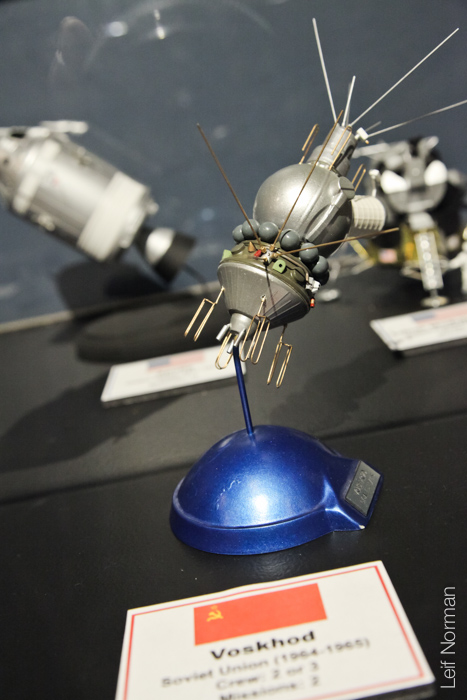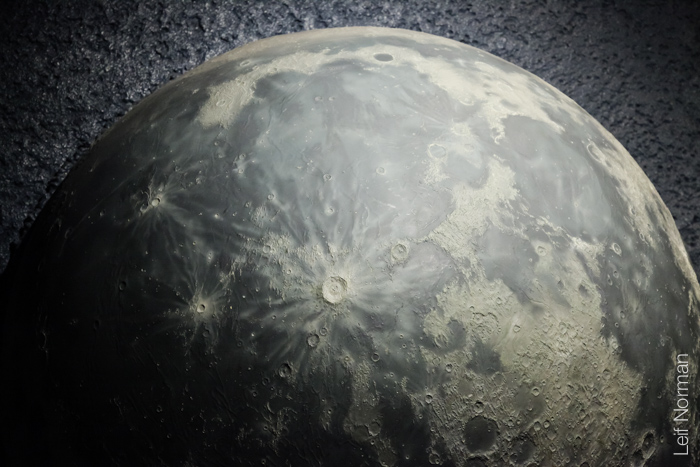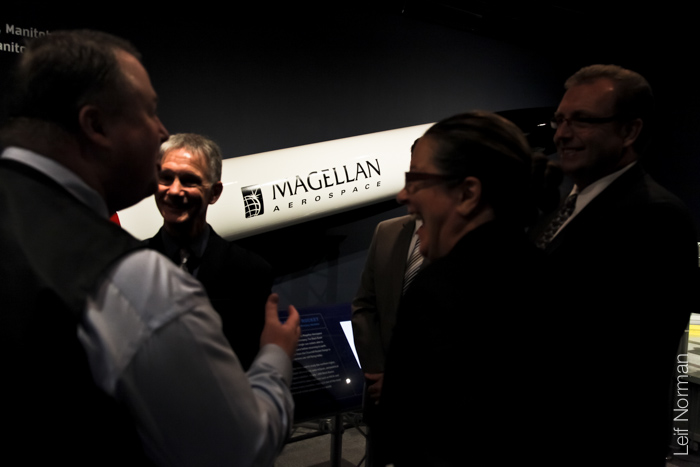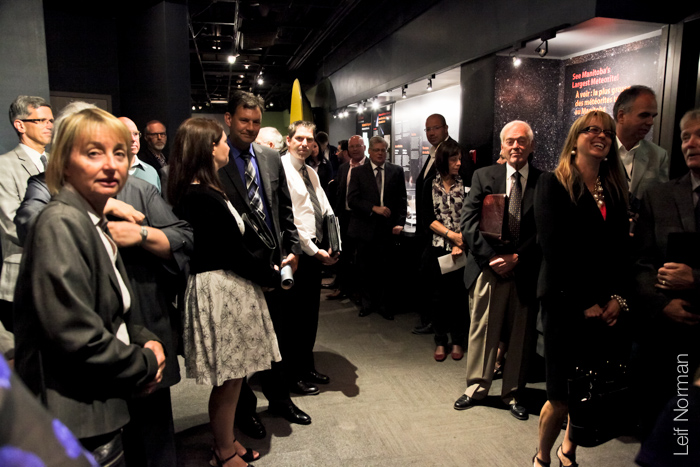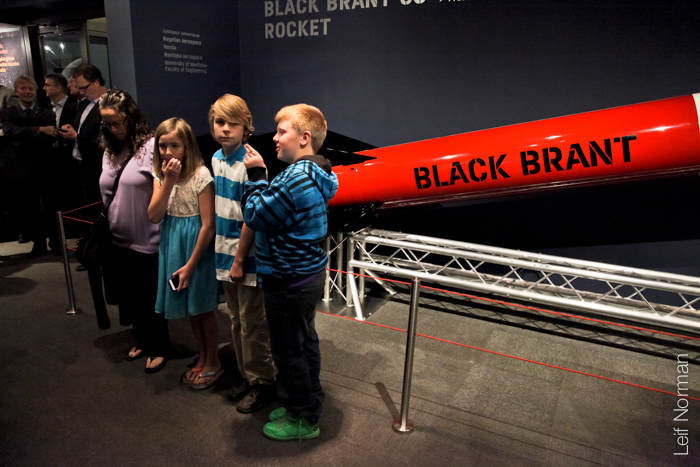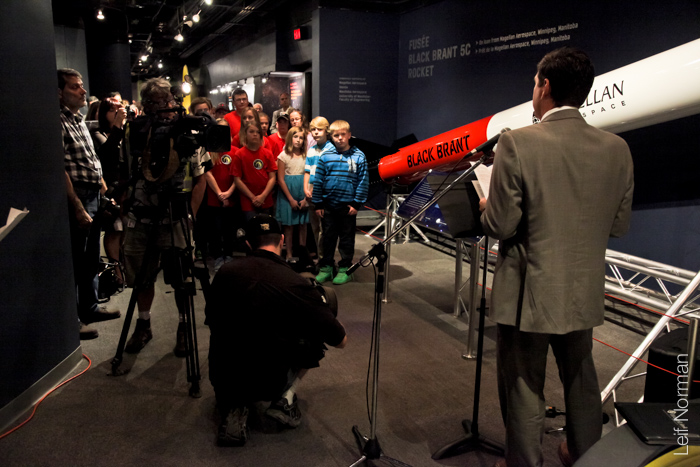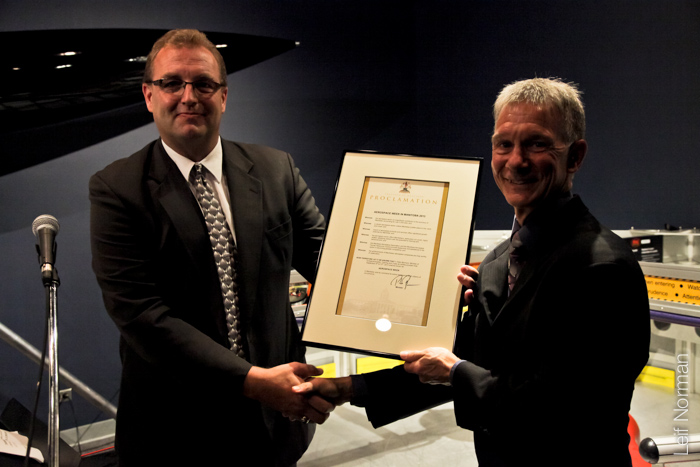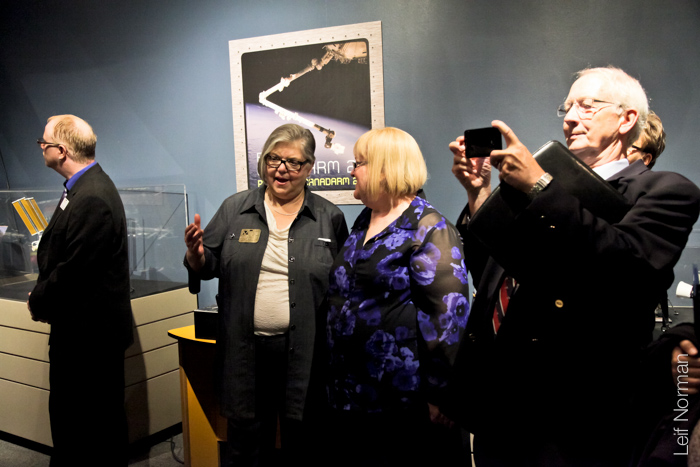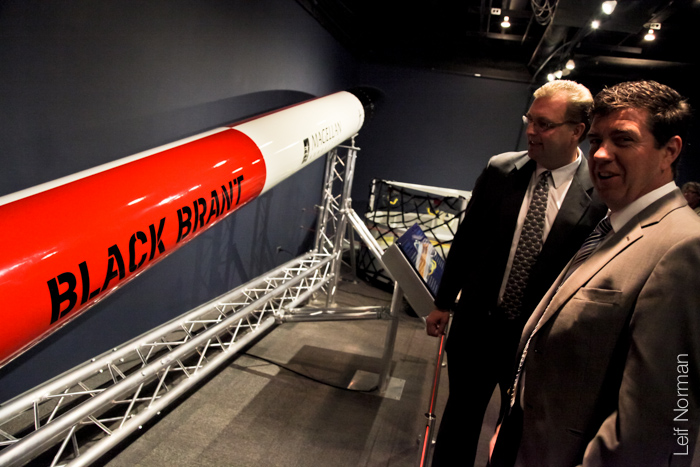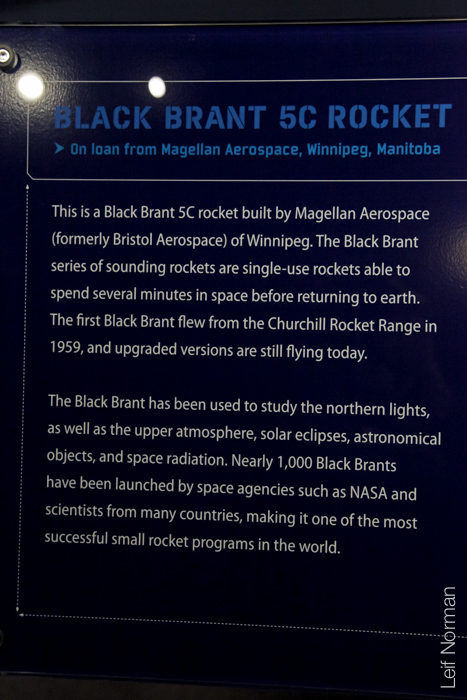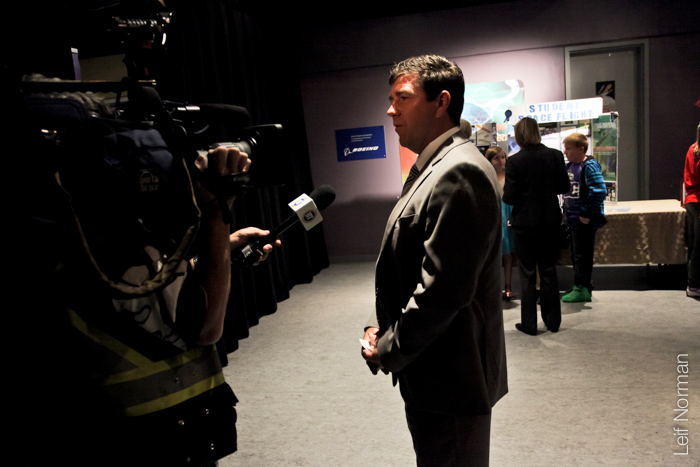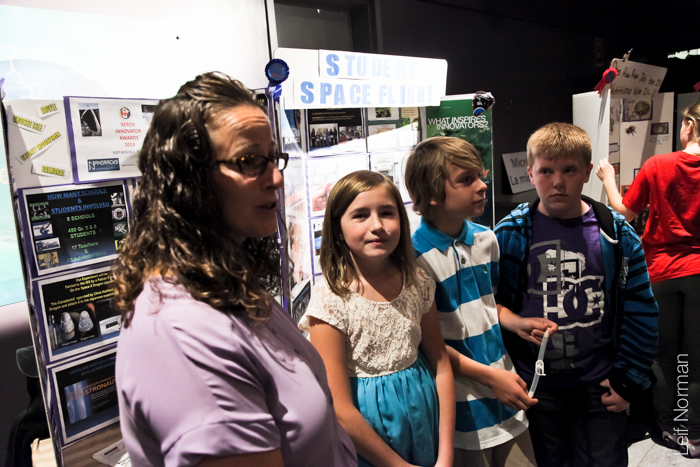“The Manitoba Museum will launch its new Made in Manitoba rocket ship exhibit today.
The Black Brant rocket, produced in Winnipeg for decades by Magellan Aerospace’s Bristol Aerospace division, is on display in the museum’s Science Gallery.
Scott Young, the museum’s manager of science communications and visitor experiences, said Monday the rocket has been in the museum since earlier this year, but now it comes with a full-fledged exhibit that officially opened on Monday.
“We have a video screen that interprets the rocket and tells the history of the Black Brant,” Young said.
‘It’s the Science Gallery’s version of the museum’s Nonsuch’
— Manitoba Museum’s Scott Young
“We even have video from a camera that was on the rocket so you can ride the rocket.”
In a statement, Don Boitson, Magellan Aerospace’s vice-president and general manager, said “the museum is the perfect place to display the Black Brant rocket.
“The Black Brant is an important piece of Manitoba’s heritage and showcases one of Manitoba’s significant contributions to the field of rocketry and space science.”
The Black Brant first blasted off on June 15, 1962, almost a year after the Soviet Union launched the first person into space, Yuri Gagarin, and a month later NASA launched Alan Shepard in a one-man Mercury rocket ship.
Since then, more than 1,000 unmanned Black Brants, named after a breed of geese, have been launched worldwide for scientific research, including by space agencies such as NASA.
The company has gifted the $100,000, nine-metre-long rocket to the museum to commemorate the craft’s 50th anniversary.
“They have studied the northern lights; they have been launched during eclipses,” Young said.
“They have done cutting-edge science for 50 years. It’s a really cool thing.
“It’s the Science Gallery’s version of the museum’s Nonsuch.”
The Nonsuch, a ship that sailed into Hudson Bay in 1668-69 as the first trading voyage for what would become the Hudson’s Bay Company, is commemorated in the museum by a full-size replica.
But Young said the museum’s Black Brant is no replica.
“It’s absolutely flight-worthy,” he said.
“It doesn’t have the electronics for getting a signal down, but it would fly. And some of the fins on it flew on previous flights.”
kevin.rollason@freepress.mb.ca
Republished from the Winnipeg Free Press print edition September 10, 2013 A2
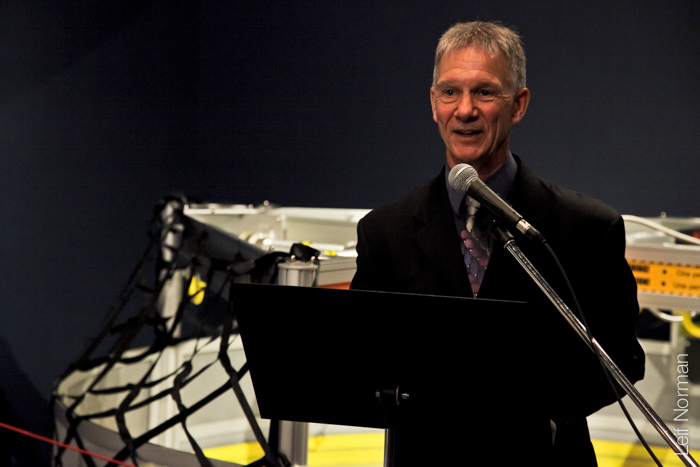
Executive Director,
Manitoba Aerospace Association
http://www.manitoba-aerospace.mb.ca
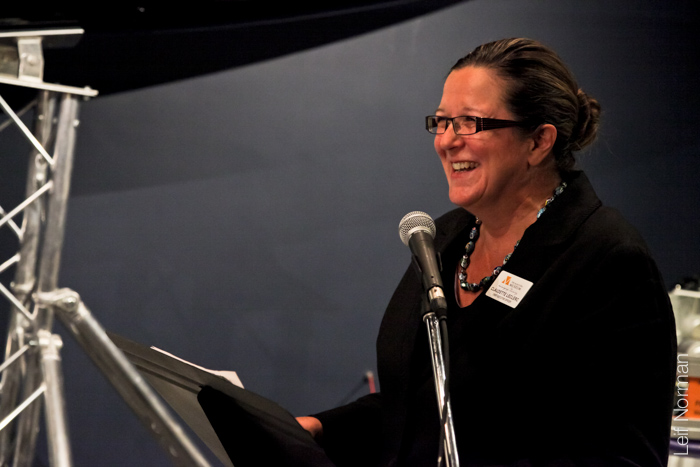
Chief Executive Officer
Manitoba Museum
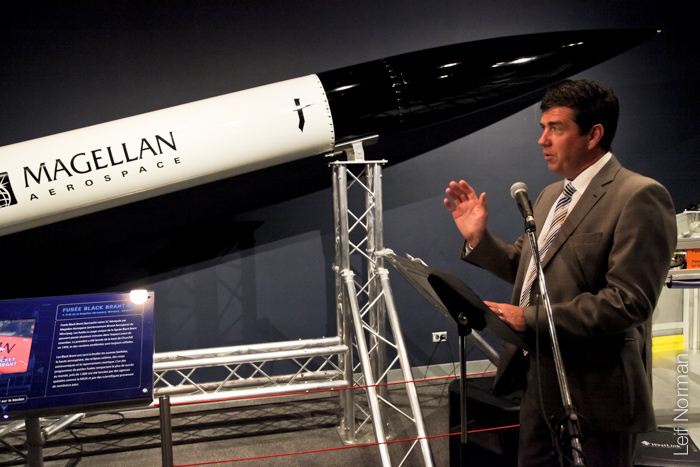
Vice President and General Manager
Magellan Aerospace, Winnipeg
A Black Brant is both a Rocket and a Bird:
The Black Brant or Pacific Brent Goose (Branta bernicla nigricans) is a subspecies of the Brant Goose that breeds in Alaska and winters in Baja California.
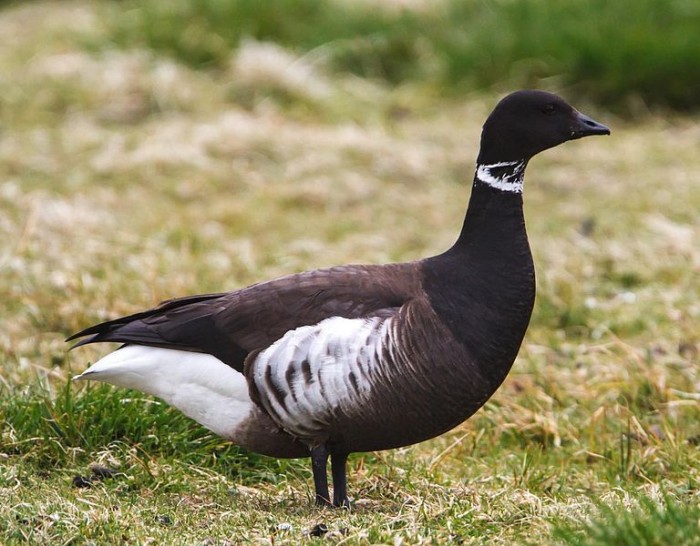
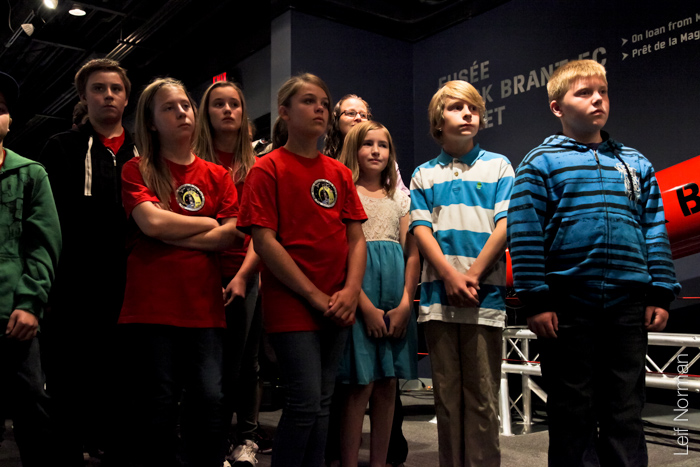

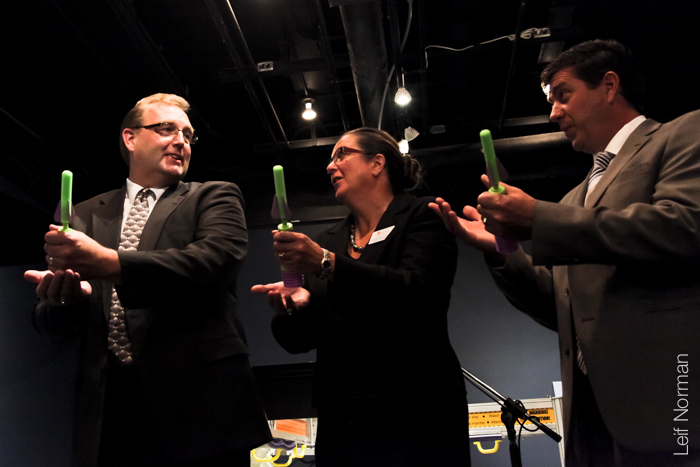
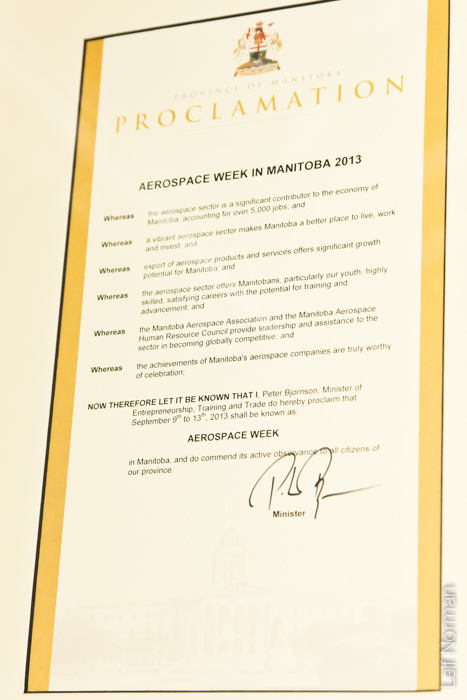
From Wikipedia:
“Black Brant was the result of research at CARDE during the 1950s into the nature of the upper atmosphere as part of ongoing research into anti-ballistic missilesystems and very-long-range communication. In 1957 CARDE contracted Bristol to produce a simple rocket fuselage, called the Propulsion Test Vehicle, for studies into high-power solid fuels. The resulting design, by Albert Fia, was quite heavy, as it was designed to be able to accommodate a wide variety of engine burning times, propellant loadings and launch angles in keeping with its role as a test vehicle for ABM systems development. The first test flight took place only two years later fromFort Churchill in September 1959.
CARDE’s attention later turned to long-distance communications and they found the Propulsion Test Vehicle system useful as a sounding rocket. To better suit this role, Bristol modified the design to be lighter and more tailored to the sounding rocket role. This became the Black Brant. CARDE launched a number of Black Brant rockets over the next few years, both the original Black Brant I design which could place a 68 kg (150 lb) payload to 150 km altitude, as well as the larger Black Brant II which first flew in October 1960, and the smaller but higher-altitude Black Brant III.
In July 1963 the much larger Black Brant V first flew, which was also used as a booster stage for the Black Brant III to make the Black Brant IV. The IV first flew in 1964, but failed, as did the next test launch. Aside from these two launches, which were corrected for, the Black Brant has never had another failure, making it one of the most reliable rockets in history. Since then it has undergone continual evolution, and the current versions are the XI and XII, consisting of Black Brant V used as an upper stage, with Talos and Terrier boosters as lower stages. They have reached altitudes of more than 1,500 km, which is above the ionosphere and well above the orbits of the Space Shuttle and the International Space Station.
The propellant designs developed by CARDE in the Black Brant program were the highest performing solid fuels of their day. Bristol then placed this propellant in a new 70 mm (2.75 in) rocket to form the CRV7, the first rocket capable of penetrating standard Warsaw Pact aircraft hangars. The CRV7 has since gone on to become the de facto standard rocket for most Western-aligned militaries.
In present day, due to its 98% success rate, it remains one of the most popular sounding rockets ever built. The rockets have been used repeatedly by the Canadian Space Agency and NASA. There is a 1:1 scale model of the Black Brant 9 rocket in front of the head office of the Canadian Space Agency in Saint-Hubert, east of Montréal.
On September 19, 2009, a Black Brant XII that was launched to study clouds caused numerous calls from the northeastern U.S. reporting “strange lights in the sky”. NASA reported that the light came from an artificial noctilucent cloud formed by the exhaust particles of the rocket’s fourth stage at an altitude of about 278 km (173 mi).”
